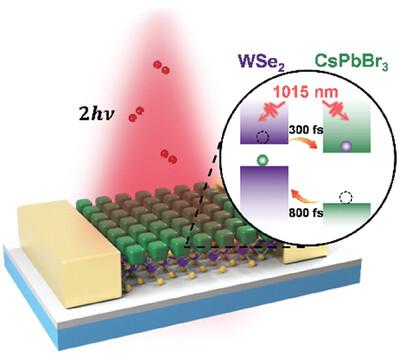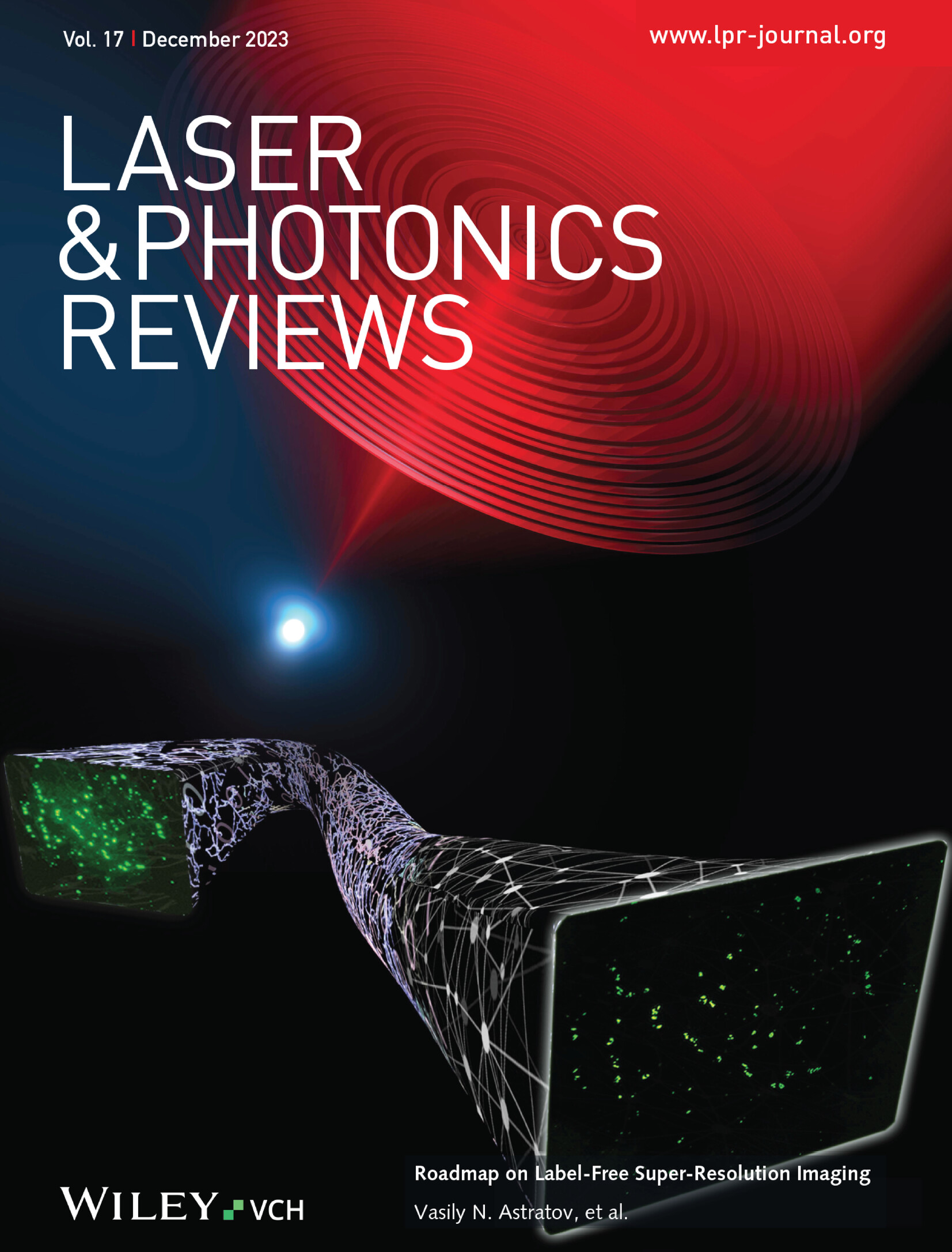Enhanced Near-Infrared Photodetection in a Mixed-Dimensional 0D/2D Heterostructure via Two-Photon Absorption
IF 9.8
1区 物理与天体物理
Q1 OPTICS
引用次数: 0
Abstract
The perovskite nanocrystals (NCs) are featured with a strong two-photon absorption (TPA) due to the quantum-confinement effect, but suffer from a short transport distance of the photogenerated charge carriers isolated within the 0D spatial volumes. On the other hand, the 2D semiconductors of transition metal dichalcogenide (TMDC) possess a large carrier transport mobility across the homogeneous monolayer, whose atomic-scale thickness results in too poor an absorption capability to accommodate plentiful charge carriers upon light illumination. Here a solid film of the perovskite CsPbBr3 NCs is deposited on top of a TMDC WSe2 monolayer to form a mixed-dimensional 0D/2D heterostructure, whose charge-transfer interaction is facilitated by the type-II band alignment between the two composing materials. According to the ultrafast transient reflection measurements, the photogenerated holes in the CsPbBr3 NCs can migrate into the WSe2 monolayer within ≈800 fs to yield the current flow in a photodetector fabricated out of this 0D/2D heterostructure. When the CsPbBr3 NCs are excited at the TPA wavelength of ≈1015 nm corresponding to the resonant bandgap transition, a responsivity of ≈7.5 × 10−5 A W−1 is achieved that is the highest among all the currently-available values from the various photodetectors operated under the TPA conditions.

求助全文
约1分钟内获得全文
求助全文
来源期刊
CiteScore
14.20
自引率
5.50%
发文量
314
审稿时长
2 months
期刊介绍:
Laser & Photonics Reviews is a reputable journal that publishes high-quality Reviews, original Research Articles, and Perspectives in the field of photonics and optics. It covers both theoretical and experimental aspects, including recent groundbreaking research, specific advancements, and innovative applications.
As evidence of its impact and recognition, Laser & Photonics Reviews boasts a remarkable 2022 Impact Factor of 11.0, according to the Journal Citation Reports from Clarivate Analytics (2023). Moreover, it holds impressive rankings in the InCites Journal Citation Reports: in 2021, it was ranked 6th out of 101 in the field of Optics, 15th out of 161 in Applied Physics, and 12th out of 69 in Condensed Matter Physics.
The journal uses the ISSN numbers 1863-8880 for print and 1863-8899 for online publications.

 求助内容:
求助内容: 应助结果提醒方式:
应助结果提醒方式:


